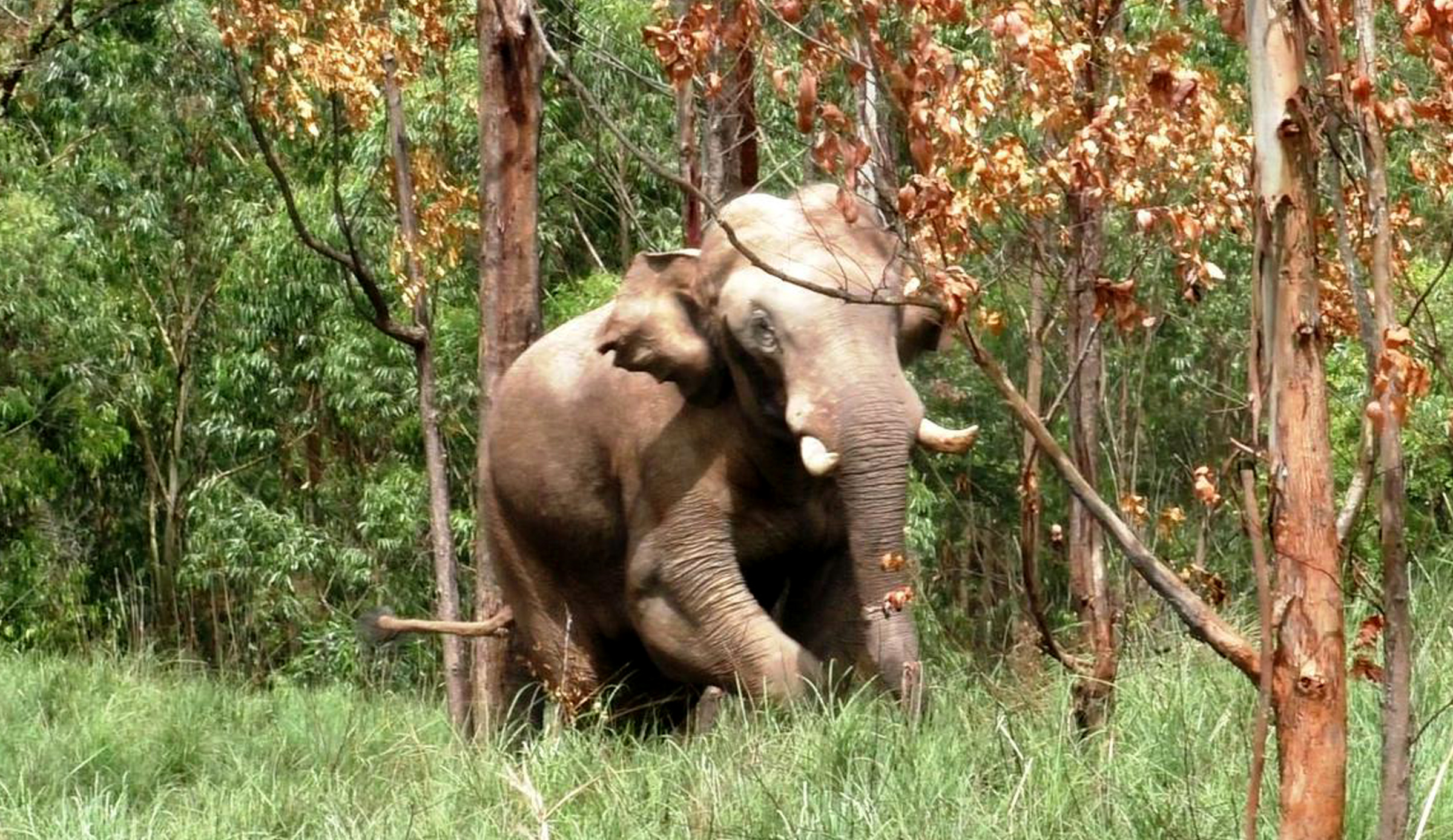Kerala Forest Minister AK Saseendran was referring to the protests in Parambikulam against relocation of the tusker 'Arikomban' from Idukki.

Arikomban before being captured from Chinnakanal in Idukki. Photo: Jomon Pampavalley.
The Kerala government, on Monday, 10 April, said that it cannot go to court seeking a change in location every time local residents object to the relocation of an elephant close to their area.
Kerala Forest Minister AK Saseendran was referring to the protests in Parambikulam area of Palakkad district against relocation of the rice-eating tusker “Arikomban” from Chinnakanal in Idukki district.
Arikomban is a portmanteau of the Malayalam words “Ari”, meaning rice, and “Komban”, tusker. The elephant is in the habit of raiding rations shops of the area and eating rice.
Last week, the Kerala High Court had ordered the relocation of the tusker to the Parambikulam Tiger Reserve in Palakkad, as suggested by a Committee of Experts (CoE) — appointed by the court to decide whether to relocate or keep in captivity the bull elephant.
Initially, a 12-hour hartal in Idukki was called by 10 panchayats after the Kerala High Court asked the Forest Department not to capture the wild tusker, but to radio collar and track the elephant.
However, following the order to relocate the animal to Parambikulam, local residents close to the tiger reserve have been protesting against the decision.
Saseendran, speaking to reporters in Palakkad, said that the government cannot move the court for a review of its order every time people of an area object to relocation of an elephant.
“No one would be happy about it. No one would welcome it. But the government cannot keep going to court, saying that this place is not good or that place is not good. There is no logic to it,” the minister said.
He said that the government would discuss the issue with legal experts before taking a decision on what to do. The minister further said it would be preferable if the people aggrieved by the decision sought legal remedies and, if they get relief from the courts, the government will be more than happy with that.
The CoE gave its report recommending relocation of the elephant after visiting several areas of Idukki district that have been affected by the activities of the tusker and after hearing the grievances of the locals.
The directions of the court came on a PIL by two animal rights groups — People for Animals (PFA) – Trivandrum Chapter and the Walking Eye Foundation for Animal Advocacy.
In their plea, filed through advocates Bhanu Thilak and Prasanth SR, the petitioners have claimed that the order to tranquilise and capture the tusker was “illegal and unscientific”. It was on their plea that the court on 23 March, in a late night sitting, stayed the government decision to capture the tusker.
Initially, a 26-member team led by Chief Veterinary Officer Arun Zachariah was roped in for Operation Arikomban — a massive operation to capture the rice-raiding elephant.
On 29 March, the court had extended the stay till 5 April and constituted an expert committee to decide whether the elephant should be captured and kept in captivity to be trained as a kumki elephant or relocated to some other forest.
The panel, in its report, favoured translocating the tusker to Parambikulam Tiger Reserve over capturing it to be trained as a kumki elephant. Kumki elephants are captive pachyderms trained for use in trapping and capturing wild elephants.
There are other tuskers that roam the area: Mottavalan, Chakkakomban, and Padayappa. The settlers claim that they, too, were creating a menace in the region.

Padayappa, a wild elephant, one of the elephants causing damage to properties in the Idukki district. (Creative Commons)
A demand is likely to be raised to capture and relocate others too, after Arikomban. It has been alleged that, barring Padayappa, the three other elephants had killed 15 people.
There are allegations of vested interests — tourism lobbies and land mafia — using tribespeople and plantation workers as tools to create a scare that would help them continue their illegal activities.
Local politicians said these tuskers destroyed 128 houses in the Munnar region in the past six months. Towards the end of January, forest watcher G Sakthivel, 48, was trampled to death, and Arikomban has been accused of murdering the elephant expert.
Official data suggest habitat destruction as the root cause for the prevailing elephant attacks in the region. Private individuals obtained land rights by fudging documents in several elephant corridors.
At least 38 elephants have been trapped in an area — cut off from the rest of the forests — because of fragmentation, and they often raid crops due to food scarcity, forest officials said.
Fences erected by estate owners are also worsening the situation in areas like Pondimala, Chinnakanal, Munnar, Chinar, Sinkukandam, Adukidannapara, Udumbanchola, Chellarkovil Mettu, and Mathikettan.
Earlier, forest patches in these areas had direct links with the Periyar tiger reserve, and elephants used to move freely through the path.
Arikomban seems to be trapped in the forests between human inhabitants on one side and the Anayirangal Dam on the other.
Forest officials said Arikomban is young and could be trained to become a good kumki elephant.
(With inputs from PTI)

Jul 26, 2024

Jul 26, 2024

Jul 25, 2024

Jul 25, 2024

Jul 25, 2024

Jul 24, 2024